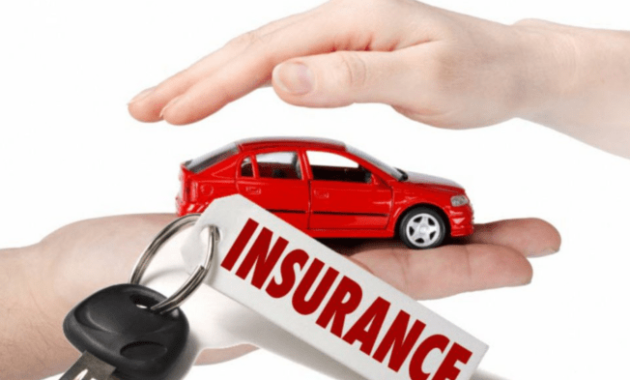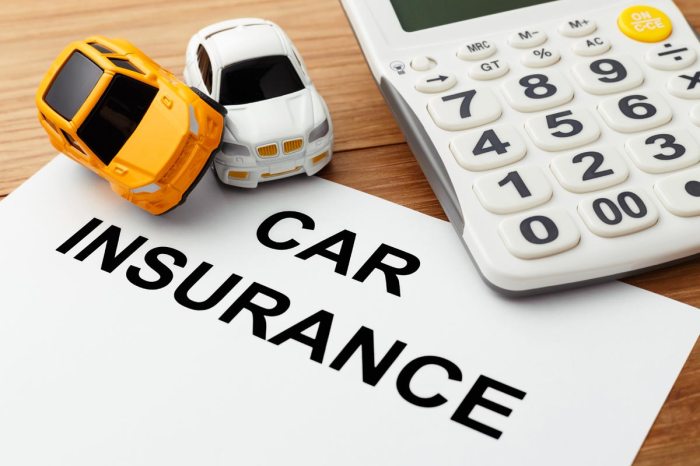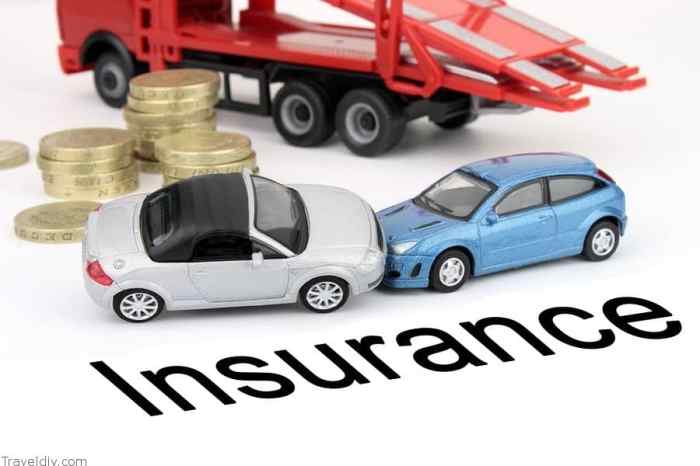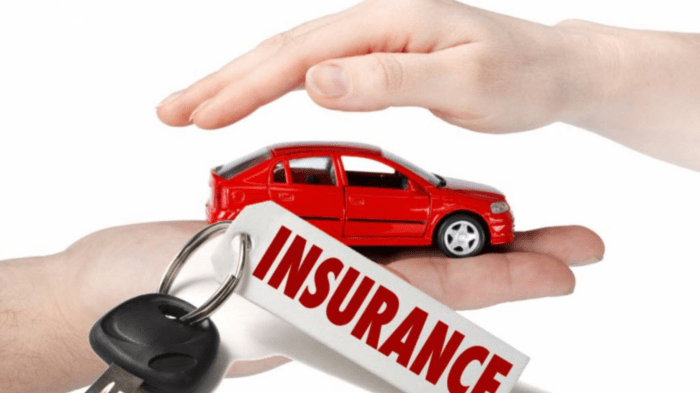
Securing the right vehicle car insurance is crucial, offering financial protection against unforeseen accidents and liabilities. Understanding the intricacies of policies, premiums, and claims processes can feel overwhelming, but this guide simplifies the complexities. We’ll explore the various types of coverage, factors influencing costs, and strategies for finding the best policy to suit your needs, ensuring you’re adequately protected on the road.
From defining core components like liability and collision coverage to navigating the often-confusing world of insurance jargon, we aim to empower you with the knowledge to make informed decisions. We’ll delve into the legal aspects of car insurance, explore effective claim-filing strategies, and provide practical tips for comparing quotes and negotiating favorable terms. Ultimately, our goal is to equip you with the confidence to navigate the vehicle car insurance landscape with ease and understanding.
Factors Influencing Vehicle Car Insurance Premiums

Car insurance premiums are not arbitrarily assigned; instead, they are carefully calculated based on a multitude of factors that assess the risk associated with insuring a particular driver and vehicle. Insurance companies use sophisticated algorithms and statistical models to determine the likelihood of an accident or claim, and this directly translates into the premium you pay. Understanding these factors can empower you to make informed decisions about your insurance coverage and potentially lower your costs.
Several key elements contribute to the final premium calculation. These factors are often weighted differently by various insurance providers, leading to variations in pricing across different companies. It’s crucial to compare quotes from multiple insurers to find the best rate for your specific circumstances.
Driving History
A driver’s history is a primary determinant of insurance premiums. This includes the number of accidents, traffic violations (such as speeding tickets or reckless driving citations), and claims filed in the past several years. A clean driving record typically results in lower premiums, while multiple accidents or violations significantly increase the cost. For example, a driver with three at-fault accidents in the past five years will likely face substantially higher premiums compared to a driver with a spotless record. Insurance companies often use a points system, where each incident adds points that elevate the premium.
Age and Gender
Statistically, younger drivers, particularly those in their late teens and early twenties, are involved in more accidents than older drivers. This higher risk translates to higher premiums for young drivers. Gender also plays a role, although this is becoming less significant in many jurisdictions due to anti-discrimination laws. Historically, young male drivers have been associated with a higher risk profile than young female drivers.
Location
Geographic location significantly impacts insurance premiums. Areas with high crime rates, frequent accidents, or higher vehicle theft rates generally have higher insurance costs. This is because insurance companies face a greater risk of claims in these areas. For instance, living in a densely populated urban center with heavy traffic might result in higher premiums compared to living in a rural area with fewer cars and lower accident rates.
Vehicle Type
The type of vehicle you drive is another critical factor. Sports cars, luxury vehicles, and high-performance cars are often associated with higher insurance premiums due to their higher repair costs and increased risk of theft. Conversely, smaller, less expensive vehicles typically have lower premiums. The vehicle’s safety features, such as anti-lock brakes and airbags, also play a role; cars with advanced safety technology may qualify for discounts.
Credit Score
In many states, insurance companies consider credit scores when determining premiums. The rationale is that individuals with good credit are perceived as lower risk. A higher credit score often correlates with responsible financial behavior, which is seen as a proxy for responsible driving habits. However, this practice is controversial and the weight given to credit scores varies by state and insurance company.
Driving Habits
Telematics programs, using devices or smartphone apps to monitor driving behavior, are increasingly common. These programs track factors like speed, braking, acceleration, and mileage. Safe driving habits, such as avoiding harsh braking and maintaining consistent speeds, can lead to lower premiums through these programs, often offering discounts for demonstrating responsible driving. Conversely, aggressive driving habits will likely result in higher premiums.
Premium Calculation Methods
Insurance companies employ various methods to calculate premiums, often combining statistical models and actuarial data. Some companies rely heavily on historical data and risk profiling, while others incorporate more sophisticated algorithms that analyze a wider range of factors. The specific formulas and weighting of different factors are often proprietary and vary significantly between insurers, emphasizing the importance of comparing quotes from multiple sources.
Finding the Best Vehicle Car Insurance
Securing the optimal car insurance policy involves careful consideration and comparison. The right policy will provide adequate coverage at a price that fits your budget, minimizing financial risk in the event of an accident or other covered incident. This requires a proactive approach, utilizing available resources and understanding the nuances of insurance policies.
Strategies for Comparing Vehicle Car Insurance Quotes
Comparing quotes from multiple insurance companies is crucial to finding the best deal. This involves obtaining quotes from at least three to five different providers, ensuring you’re comparing apples to apples. Factors like coverage levels, deductibles, and discounts should remain consistent across comparisons. Online comparison tools can streamline this process, allowing you to input your information once and receive multiple quotes simultaneously. However, it’s recommended to verify the quotes directly with the insurance companies, as online aggregators may not always display the most up-to-date information or the full range of available discounts. Consider factors beyond price, such as the insurer’s claims handling reputation and customer service ratings.
A Step-by-Step Guide to Obtaining Car Insurance
Obtaining car insurance is a straightforward process, though attention to detail is important. First, gather necessary information, including your driver’s license, vehicle identification number (VIN), and driving history. Next, obtain quotes from several insurance companies, using online tools or contacting providers directly. Carefully review the quotes, paying attention to coverage limits, deductibles, and premiums. Once you’ve selected a policy, complete the application process, providing all required information accurately and completely. After approval, you’ll receive your insurance card, confirming your coverage. Remember to keep your policy documents readily accessible and inform your insurer of any changes in your driving situation, such as address changes or adding a new driver to your policy.
Essential Questions to Ask Insurance Providers
Before committing to a policy, it’s vital to ask clarifying questions. Inquire about the specific coverage details of each policy, ensuring you understand what is and isn’t covered. Clarify the claims process, including how to report an accident and what documentation is required. Ask about available discounts, such as those for safe driving records, bundling policies, or anti-theft devices. Investigate the insurer’s financial stability rating, indicating their ability to pay claims. Inquire about customer service options and the availability of 24/7 support. Finally, ask about the policy’s renewal process and any potential increases in premiums.
Interpreting Key Terms and Conditions of an Insurance Policy
Understanding the policy’s terms and conditions is paramount. Familiarize yourself with key terms like “liability coverage,” which protects you financially if you cause an accident; “collision coverage,” which covers damage to your vehicle in an accident, regardless of fault; and “comprehensive coverage,” which covers damage from events like theft or vandalism. Pay close attention to the policy’s deductibles, which are the amounts you pay out-of-pocket before your insurance coverage kicks in. Understand the policy’s limits, which specify the maximum amounts the insurer will pay for covered losses. Review any exclusions, which are specific events or circumstances not covered by the policy. A thorough understanding of these elements ensures you are adequately protected and avoid unexpected costs.
Filing a Vehicle Car Insurance Claim

Filing a car insurance claim can seem daunting, but understanding the process can significantly ease the stress involved after an accident. This section Artikels the necessary steps, documentation, and interactions with insurance adjusters to ensure a smooth claim resolution.
The Claim Filing Procedure
Promptly reporting the accident to your insurance company is crucial. The sooner you report, the faster the process begins. Your initial report should include the details of the accident, including the date, time, location, and parties involved. Accurate and detailed information is essential for a successful claim. Failure to report promptly could impact your claim’s processing and potential payout.
Required Documentation for a Vehicle Car Insurance Claim
Supporting your claim with comprehensive documentation is vital. This ensures your insurer has all the necessary information to assess the damage and liability. Missing documentation can significantly delay the claim process.
- Police Report: A copy of the police report, if one was filed, is essential, particularly in cases involving injuries or significant property damage. This report provides an unbiased account of the accident. If a police report wasn’t filed, you might want to explain why in your claim.
- Photographs and Videos: Detailed photographic evidence of the damage to all vehicles involved, as well as the accident scene itself, is invaluable. Pictures should capture the extent of the damage from multiple angles. Videos can provide additional context, capturing the overall situation.
- Witness Information: Contact information (names, addresses, phone numbers) for any witnesses to the accident. Witness statements can corroborate your account of events and are highly beneficial.
- Vehicle Identification Number (VIN): The VIN of your vehicle is crucial for identifying your insurance policy and the vehicle’s specifications.
- Driver’s License and Insurance Information: Your driver’s license and insurance information, as well as that of the other driver(s) involved, are fundamental to the claim process.
- Medical Records (if applicable): If injuries were sustained, medical records documenting the treatment received are necessary to support claims for medical expenses.
- Repair Estimates: Obtain at least two repair estimates from reputable auto body shops. These estimates provide a basis for determining the cost of repairs.
Dealing with Insurance Adjusters
Insurance adjusters investigate claims to determine liability and the extent of damages. Cooperating fully with the adjuster is essential. Respond promptly to their requests for information and be prepared to answer questions about the accident. Maintain clear and professional communication throughout the process. Remember to keep detailed records of all communication with the adjuster, including dates, times, and the content of conversations. It’s also wise to get any agreements in writing.
A Step-by-Step Guide to the Claim Process
The claim process typically follows these steps:
- Report the Accident: Immediately contact your insurance company to report the accident, providing initial details.
- Gather Documentation: Collect all necessary documentation as Artikeld above.
- File the Claim: Submit your claim to your insurance company, including all collected documentation.
- Cooperate with the Adjuster: Respond promptly and fully to the adjuster’s requests for information.
- Negotiate Settlement: Discuss the settlement offer with the adjuster. If you disagree with the offer, you can negotiate or seek further assessment.
- Receive Payment: Once the claim is settled, you will receive payment for repairs, medical expenses, or other covered losses.
Vehicle Car Insurance and Legal Responsibilities
Driving a vehicle comes with significant legal responsibilities, and possessing adequate car insurance is often a cornerstone of fulfilling these obligations. Failure to comply with insurance mandates can lead to severe penalties, impacting both your finances and driving privileges. Understanding the legal aspects of car insurance is crucial for responsible vehicle ownership.
Legal Requirements for Vehicle Car Insurance Vary by Region
Vehicle insurance laws differ substantially across regions. For instance, in many US states, carrying minimum liability insurance is mandatory. This typically covers bodily injury and property damage caused to others in an accident. However, the specific minimum coverage amounts vary significantly from state to state, ranging from relatively low limits to substantially higher requirements. Similarly, other countries have their own unique regulations, often including compulsory insurance schemes or stringent requirements for comprehensive coverage. In some European nations, for example, drivers are required to carry “green cards” proving their insurance coverage, which is necessary for driving in other participating countries. The specific requirements are usually detailed in a country’s motor vehicle legislation or through the relevant governmental agencies responsible for road safety.
Consequences of Driving Without Adequate Insurance Coverage
Driving without the legally required insurance coverage can result in a range of serious consequences. These consequences vary depending on the jurisdiction and the specifics of the violation. Penalties can include substantial fines, license suspension or revocation, and even imprisonment in some cases. Beyond the legal ramifications, driving without insurance leaves you personally liable for any damages or injuries you cause in an accident. This could lead to substantial financial burdens, including legal fees, medical expenses, and vehicle repairs. In the event of an accident, the uninsured driver could face legal action from the injured parties. The lack of insurance coverage significantly impacts your ability to protect yourself from financial ruin.
Legal Implications of Different Types of Accidents and Their Impact on Insurance Claims
The type of accident significantly influences the legal and insurance implications. A simple fender bender with minimal damage will typically have a different claim process than a serious accident involving injuries or fatalities. In a minor accident, both parties might be able to settle the matter directly, possibly through their respective insurance companies. However, in more serious accidents, investigations by law enforcement are common, and legal proceedings might be necessary. If injuries occur, medical bills, lost wages, and pain and suffering can significantly increase the financial consequences. The presence of witnesses and the fault determination in the accident also play a crucial role in determining insurance liability and the subsequent claim process. For example, a driver deemed at fault for an accident involving injuries will likely face higher insurance premiums and potential legal action, even if their insurance covers the damages. In cases where multiple parties are involved or there is significant dispute over fault, the legal process can become complex and lengthy, requiring expert legal counsel.
Liability in Accidents Involving Multiple Vehicles
Accidents involving multiple vehicles often lead to complex liability determinations. Each driver’s level of fault is assessed, and insurance coverage is allocated accordingly. For example, if three vehicles are involved and one driver is determined to be 70% at fault, their insurance company will likely cover 70% of the damages, while the other two drivers’ insurance companies will share responsibility for the remaining 30%. This allocation can vary significantly depending on the specifics of the accident, witness testimony, and the investigation conducted by the authorities or insurance adjusters. The process often involves negotiation between the involved insurance companies to determine the respective shares of liability.
Liability in Accidents Involving Uninsured Drivers
Accidents involving uninsured drivers pose unique challenges. The injured party might have to pursue legal action against the uninsured driver to recover damages. In some jurisdictions, uninsured motorist coverage in your own policy can help compensate for injuries or damages caused by an uninsured driver. However, even with this coverage, recovering full compensation can be difficult and may require legal intervention. The lack of insurance from the at-fault driver could significantly prolong the process of receiving compensation for injuries or property damage.
Illustrating Insurance Concepts
Understanding key insurance concepts is crucial for making informed decisions about your vehicle coverage. This section provides visual and textual explanations to clarify the mechanics of deductibles and liability insurance.
Deductibles Explained
Imagine a rectangular box representing the total cost of vehicle repairs after an accident. Let’s say the box is 10 units wide. Now, divide this box into two sections. The left section represents your deductible – let’s say 2 units wide. This is the amount you pay out-of-pocket before your insurance coverage kicks in. The right section, 8 units wide, represents the amount your insurance company will pay. The size of the left section (the deductible) varies depending on your policy. A higher deductible means a smaller amount the insurance company pays, but lower premiums. A lower deductible means a larger amount the insurance company pays, but higher premiums. This visual demonstrates how the deductible affects your personal financial responsibility in the event of a claim.
Liability Insurance in a Multi-Vehicle Accident
Consider a scenario involving three vehicles at an intersection. Driver A runs a red light and collides with Driver B, causing Driver B to then hit Driver C. Driver A is deemed at fault. Driver B sustains $5,000 in vehicle damage and $10,000 in medical bills. Driver C has $3,000 in vehicle damage. Driver A’s liability insurance policy has a $100,000 limit. Driver A’s insurance company will be responsible for paying for the damages to Driver B and Driver C’s vehicles and medical bills for Driver B. The insurance company would likely pay $5,000 to repair Driver B’s vehicle, $10,000 for Driver B’s medical expenses, and $3,000 to repair Driver C’s vehicle. This is a total of $18,000 paid out by Driver A’s liability insurance. If the total damages exceeded the $100,000 policy limit, Driver A would be personally responsible for the remaining costs. This example illustrates how liability insurance protects against financial responsibility for damages caused to others in an accident where the policyholder is at fault.
Wrap-Up

Choosing the right vehicle car insurance is a significant financial decision, impacting your peace of mind and financial security. By understanding the various coverage options, factors influencing premiums, and the claims process, you can make an informed choice that aligns with your individual needs and budget. Remember to regularly review your policy and adjust coverage as necessary to ensure you remain adequately protected. Proactive planning and informed decision-making are key to securing the best possible vehicle car insurance protection.
FAQ Overview
What is uninsured/underinsured motorist coverage?
This coverage protects you if you’re involved in an accident with an uninsured or underinsured driver. It helps cover your medical bills and vehicle repairs.
How often should I review my car insurance policy?
It’s recommended to review your policy at least annually, or whenever there’s a significant life change (e.g., new car, address change, change in driving habits).
Can I get a discount on my car insurance?
Yes, many insurers offer discounts for various factors, such as safe driving records, bundling insurance policies, anti-theft devices, and completing defensive driving courses.
What happens if I’m at fault in an accident?
Your liability coverage will typically pay for the other driver’s damages and injuries. Your collision coverage will cover your vehicle’s repairs, minus your deductible, regardless of fault.
What is a deductible?
A deductible is the amount you pay out-of-pocket before your insurance coverage kicks in. A higher deductible usually means lower premiums.